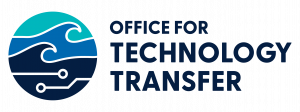Interview with Tech Transfer: IP Basics
Intellectual property (IP) is an essential tool for research and development, especially for early-
stage, high-risk technologies. Additionally, it can be a strategic business tool to gain market
position and maintain product or process exclusivity. Whether you are a seasoned entrepreneur
or a first-time inventor, understanding IP can help effectively manage the technology throughout
the development and commercialization processes. The Office for Technology Transfer at
Woods Hole Oceanographic Institution asked our in-house Patent Agent, Cristy Salanga, some of the most frequently asked questions regarding intellectual property.
1) What is intellectual property (IP)?
Broadly speaking, IP is a creation of the mind, often in an intangible form. IP applies to
inventions, creative works, software, trade names/symbols, and designs. There are four primary
types of IP protection: patents, copyrights, trademarks, and trade secrets which give exclusive
rights to the inventors/creators to benefit from their work and to receive proper credit. Know-how is also a form of IP that includes ideas, technical expertise, and related information. While this form of IP may not necessarily be protectable, it certainly has value and can be licensed. It’s important to note that IP still exists whether it has IP protection or not.
2) What is patent inventorship, and how are inventors determined?
Inventorship is a legal matter and is not determined in the same manner as authorship for a
journal publication. An inventor is someone who made significant contributions to the complete
and working invention. Merely following the plan or direction of a manager or faculty member
does not meet the threshold for inventorship. Similarly, stating an objective to be met without
describing one or more of the inventive details of the working invention does not make one an
inventor. Getting inventorship right is important, because an issued patent may be deemed invalid if
inventorship is incorrect. OTT will work with you, your co-inventors, and our patent counsel to
correctly determine inventorship.
3) How do I know if my idea is patentable?
In general, if you are the first person to solve a problem in a specific way that is novel, useful,
and non-obvious, you may have a patentable invention. What is specifically not patentable are
laws of nature, natural phenomena, and abstract ideas such as scientific principles, naturally
occurring phenomena, mental processes, and mathematical algorithms.
4) What does “novel” mean?
To be novel, an invention must be distinguishably different from other existing inventions
in the public domain. Perhaps this is a completely new invention, but more often, these
differences are improvements to known systems or processes or are new uses of
existing systems, methods, or materials. What is important to understand is that these
differences must be thoroughly described to demonstrate novelty over existing systems
in full, clear, and exact terms to enable any person in the same field to make/use the
invention.
5) What does “useful” mean?
Although not a high bar, an invention must have a demonstrated use or specific utility to
meet this standard.
6) What does “non-obviousness” mean?
This standard requires that the invention not be obvious to someone in the same field as
the invention. A combination of known elements used in a new way that produces a new,
unexpected result would provide evidence of non-obviousness. Similarly, an invention
that solves a problem that others have attempted to achieve but failed. For making an
argument against non-obviousness, it is helpful to describe the problem(s) that the
invention solves and why it has not been solved previously. Inventors may encounter
problems during the invention’s research and development, and these solutions are
great to highlight as the basis for non-obviousness.
7) Why are Material Transfer Agreements (MTAs) necessary?
Transfer of materials to a third party may affect the patentability of a related invention unless it is
done confidentially. A Material Transfer Agreement (MTA) is a legal document for the protection
of tangible research materials created by researchers that may be useful to others for research
or commercial development. Please contact OTT before initiating a materials transfer so that
an appropriate MTA can be developed to protect both you and WHOI.


